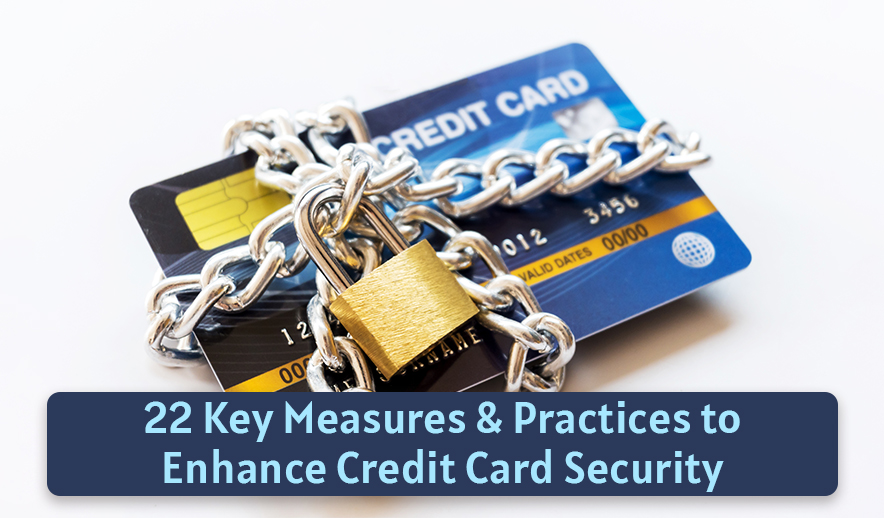
The Smart Swiper’s Handbook: Ensuring Safety in Credit Card Usage

Credit card security is a crucial aspect of using credit cards to protect your personal and financial information. Here are some key measures and practices to enhance credit card security:
Protect Card Information: Keep your credit card physically secure. Do not share your card number, expiration date, CVV code, or PIN with anyone unless it is necessary and trustworthy. Memorize your PIN and avoid writing it down or sharing it with others.
Card Activation: Activate your new credit card as soon as you receive it. This ensures that only you can use the card.
Secure Websites: When making online purchases, ensure that you are using secure websites. Look for the padlock icon in the browser’s address bar and “https://” at the beginning of the website’s URL, indicating a secure connection.
Be Cautious with Personal Information: Be cautious about sharing personal information online, especially on social media platforms. Avoid posting pictures or messages that reveal your credit card details or other sensitive information.
Check Statements Regularly: Review your credit card statements regularly to detect any unauthorized transactions. If you notice any suspicious or unrecognized charges, report them to your credit card issuer immediately.
Monitor Account Activity: Utilize online or mobile banking services to monitor your credit card account activity frequently. Promptly report any suspicious activity or discrepancies to your credit card issuer.
Shred Documents: Dispose of credit card statements, receipts, and other sensitive documents by shredding them to prevent potential identity theft.
Phishing Awareness: Be cautious of phishing attempts. Do not click on suspicious email links or provide personal information in response to unsolicited emails or calls. Legitimate organizations will not ask you to provide sensitive information via email.
Secure Devices: Keep your devices, including smartphones and computers, protected with up-to-date security software, strong passwords, and biometric authentication methods (if available).
Lost or Stolen Cards: Immediately report lost or stolen credit cards to your card issuer. They can suspend the card and prevent unauthorized use. Save the customer service contact numbers for your credit card issuer in a secure location, separate from your card.
Enable Notifications: Set up transaction alerts or notifications through email, SMS, or mobile apps. This way, you will receive instant notifications about any activity on your credit card account.
EMV Chip Cards: Use credit cards with EMV chip technology, as they offer enhanced security compared to traditional magnetic stripe cards. EMV chip cards generate a unique transaction code for each transaction, making it harder for fraudsters to duplicate card information.
Remember, practicing vigilance and being proactive about credit card security can significantly reduce the risk of fraud and unauthorized use. Stay informed about the latest security measures and recommendations provided by your credit card issuer.
Tips to secure your passwords and personal information?
Create strong, unique passwords: Use a combination of letters, numbers, and symbols. Avoid using easily guessable information like birthdays or names. Consider using a reliable password manager to securely store and generate passwords.
Enable two-factor authentication (2FA): Activate 2FA whenever possible to add an extra layer of security. This typically involves receiving a verification code on your mobile device or email, in addition to entering your password.
Be cautious with phishing attempts: Be wary of suspicious emails, messages, or calls asking for personal information. Avoid clicking on links or downloading attachments from unknown sources. Verify the legitimacy of requests independently before providing any sensitive information.
Use secure networks: When accessing personal accounts or conducting online transactions, use secure Wi-Fi networks or consider using a virtual private network (VPN) for added security.
Keep software and devices up to date: Regularly update your operating system, antivirus software, and applications to protect against known vulnerabilities and security breaches.
Be mindful of sharing personal information: Be cautious when sharing personal information online, especially on social media platforms. Avoid oversharing details that can be used to exploit or impersonate you.
Use secure websites: When providing personal information or making online payments, ensure that websites have a secure connection (look for “https://” and a padlock symbol in the address bar) to encrypt your data during transmission.
Regularly monitor accounts and credit reports: Keep a close eye on your financial accounts for any unauthorized activity. Check your credit reports periodically to identify any suspicious accounts or inquiries.
Practice good password hygiene: Avoid reusing passwords across multiple accounts. Change passwords regularly, especially for critical accounts. If a data breach occurs, update passwords immediately.
Educate yourself about scams and security best practices: Stay informed about common scams and security threats. Read reputable sources, follow security guidelines from reliable organizations, and stay updated on the latest security practices.
By following these practices and staying vigilant, you can significantly enhance the security of your passwords and personal information.



